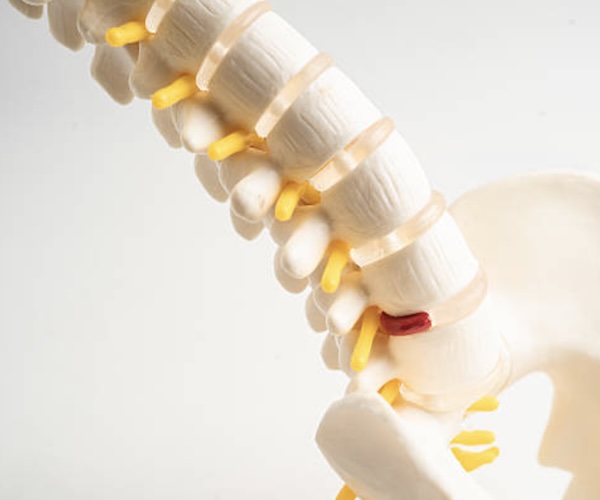
What is Spondylitis?
Spondylitis is a form of chronic inflammation affecting the spine and nearby joints. It often leads to pain, stiffness and reduced mobility, particularly in the neck or lower back. Over time, if left untreated, it can result in the fusion of spinal vertebrae and permanent postural issues.
What causes Spondylitis?
Spondylitis typically develops due to a combination of genetic, autoimmune and lifestyle related factors. The immune system mistakenly attacks the joints in the spine, causing inflammation.
Contributing causes and risk factors include:
- Genetic predisposition
- Poor posture over time
- Sedentary lifestyle or lack of exercise
- Repeated spinal strain or injury
- Chronic stress and digestive imbalance
- Autoimmune triggers, especially in cases like ankylosing spondylitis
What are the common types of Spondylitis?
Spondylitis is an umbrella term for several inflammatory spinal conditions. Common types include:
- Cervical Spondylitis – Affects the neck region, causing stiffness, pain and sometimes vertigo or headaches.
- Lumbar Spondylitis – Involves the lower back, often leading to stiffness, radiating pain or restricted movement.
- Ankylosing Spondylitis – A chronic autoimmune condition where spinal vertebrae may fuse over time.
- Sacroiliitis – Inflammation of the sacroiliac joints between the spine and pelvis.
What are the symptoms of Spondylitis?
Spondylitis symptoms vary depending on the affected region and severity. Common signs include:
- Chronic pain and stiffness in the back or neck
- Limited range of motion
- Morning stiffness that improves with activity
- Pain that radiates to arms or legs
- Fatigue and muscle tightness
- Poor posture or spinal curvature over time
In autoimmune types, symptoms may also affect the eyes, digestive system or other joints.
How is Spondylitis diagnosed?
- Medical history and physical examination to assess pain, stiffness and mobility
- X-rays or MRI scans to detect inflammation, degeneration or vertebral fusion
- Blood tests to check for markers of inflammation or autoimmune activity
What are the conventional treatments for Spondylitis?
Conventional treatment aims to reduce inflammation, manage pain and maintain mobility. Options include:
- Non-steroidal anti-inflammatory drugs (NSAIDs)
- Muscle relaxants or corticosteroids
- Physical therapy and spinal exercises
- Posture correction and ergonomic support
- Surgery in advanced cases where nerves or mobility are severely affected
What lifestyle changes can help manage Spondylitis?
- Practice regular stretching and spinal mobility exercises
- Maintain correct posture, especially while working or sitting
- Use ergonomic chairs and mattresses
- Apply hot or cold packs to relieve pain and inflammation
- Follow an anti-inflammatory diet rich in whole foods and low in processed items
- Manage stress through yoga, meditation or breathing practices
Is there an ayurvedic treatment for Spondylitis?
Ayurveda offers a time-tested, natural approach to managing spondylitis. It views the condition as an imbalance of Vata dosha, often accompanied by toxin accumulation (Ama) in the joints and spine.
Ayurvedic Therapies for Spondylitis Include:
- Abhyanga (Herbal Oil Massage) - Improves circulation, reduces stiffness and soothes inflamed muscles using medicated oils like Mahanarayan or Dhanwantharam tailam.
- Kati Basti / Greeva Basti - A targeted therapy where warm oil is retained over the lower back (Kati) or neck (Greeva), relieving pain and nourishing deep tissues.
- Pizhichil and Njavarakizhi - Traditional therapies using warm oil and herbal boluses to promote flexibility and reduce inflammation.
- Basti (Medicated Enema) - Especially beneficial for chronic Vata disorders, helps detoxify and restore balance to the lower body.
- Herbal Formulations - Remedies like Rasna Guggulu, Shallaki, Ashwagandha and Dashamoola support joint health and reduce inflammation naturally.